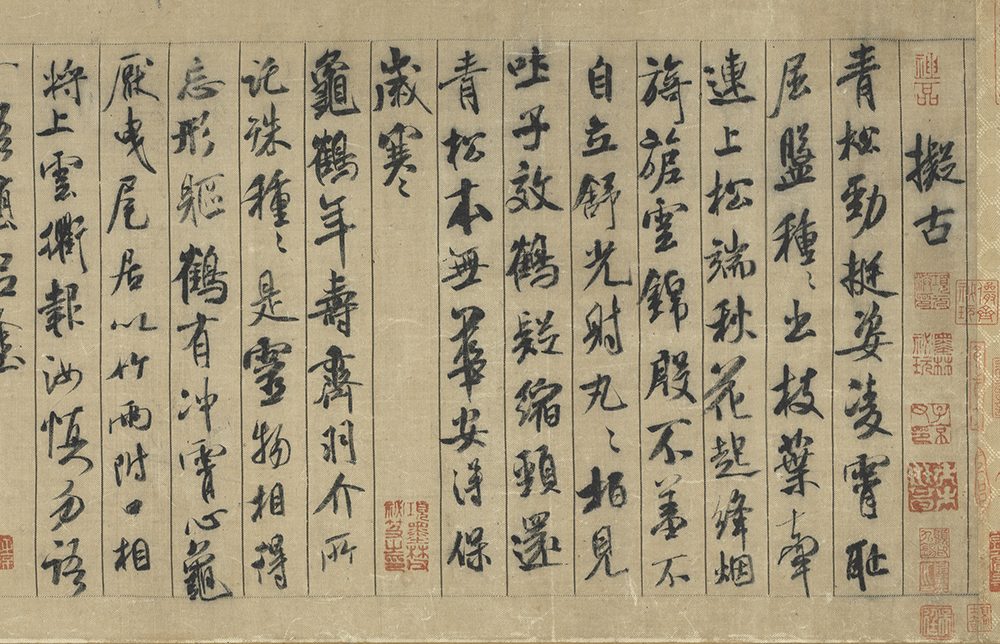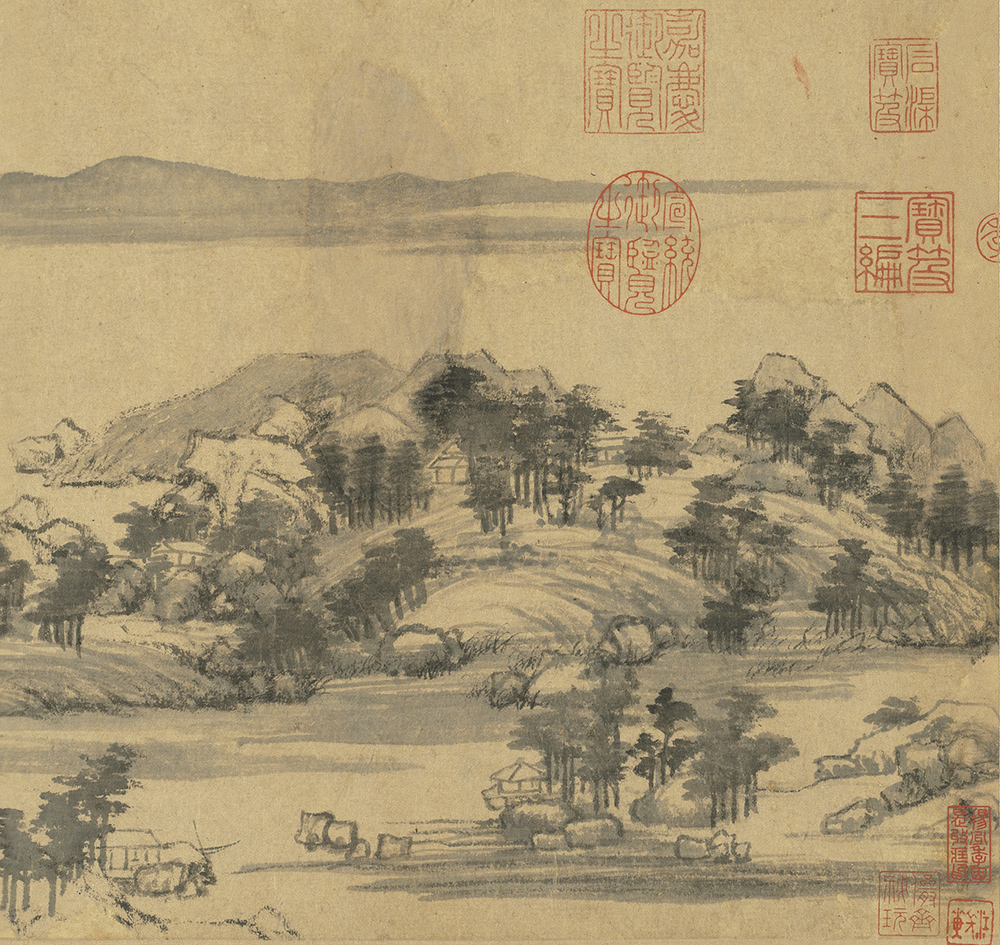Dong Qichang excelled at the connoisseurship of painting and calligraphy. Starting in the latter half of the 1570s, he began participating in activities involving the appreciation of painting and calligraphy and by the 1590s started to collect artworks through the ages. Over his lifetime, Dong Qichang saw, inscribed, and collected several hundred works of painting and calligraphy. Collectively, they came to serve as a strong foundation for his studying and practice of painting and calligraphy, learning and cultivation, creating a landscape of the mind, and formulating theories on art and its history. Dong's inscriptions on works of painting and calligraphy, whether to determine authenticity, judge their quality, trace the origins of features, or record their collection history, both add considerably to them and also form an important body of reference material for examining his perspective on painting and calligraphy theory. Aside from their artistic quality, Dong Qichang's inscriptions also offer a rich source of information on his connections in art circles and collection of painting and calligraphy.
On Sichuan Silk
On display Jan. 9 to Feb. 17
- Mi Fu (1052-1108), Song dynasty
- Handscroll, ink on silk, 27.8 x 270.8 cm
Mi Fu (style name Yuanzhang), a native of Xiangyang in Hubei, is known as one of the Four Masters of Northern Song Calligraphy along with Cai Xiang, Su Shi, and Huang Tingjian. Mi Fu did this handscroll at the invitation of Lin Xi (fl. 1068-1100), writing eight poems on a piece of Lin's prized Sichuan silk. Although the characters were written within a grid of ink lines, the brush moves with unrestraint and spirit, as if completely unconfined by its boundaries. Dong Qichang praised the power of this work, comparing it to a lion attacking an elephant with all its energy.
When Dong Qichang was serving at the Hanlin Academy, he first acquired a copy of "On Sichuan Silk." Later in 1604 he exchanged several works in his collection for the original in the possession of Wu Ting, an antiques dealer in Huizhou. Then around 1615 this scroll came into the hands of Dong Qichang's friend, Chen Yan. At the age of 79 by Chinese reckoning, Dong saw this scroll again in the capital, sighing with great emotion in his inscription written at that time.
Dwelling in the Fuchun Mountains
On display Jan. 9 to Feb. 17
- Huang Gongwang (1269-1354), Yuan dynasty
- Handscroll, ink on paper, 33 x 636.9
Huang Gongwang (style name Zijiu, sobriquet Dachi), a native of Changshu in Jiangsu, excelled at calligraphy and was gifted at poetry. However, he was most renowned for his landscape painting, for which he was ranked as one of the Four Yuan Masters with Wu Zhen, Ni Zan, and Wang Meng. This handscroll depicts mountains along the Fuchun River, the scenery deep and remote while also pure and expansive. The brushwork throughout is gentle and reserved at times, and unrestrained and easy-going at others, making this a masterpiece from Huang Gongwang's late years.
Among Huang Gongwang's paintings, Dong Qichang had the greatest praise for this handscroll. In 1596, with assistance from his friend Hua Zhonghan, Dong was able to purchase this painting, which he had so admired. It became a treasured part of his collection that he imitated many times. Due to family difficulties later in life, however, Dong had no choice but to pawn the handscroll to his friend Wu Zhengzhi, a Presented Scholar from the same year as himself.


